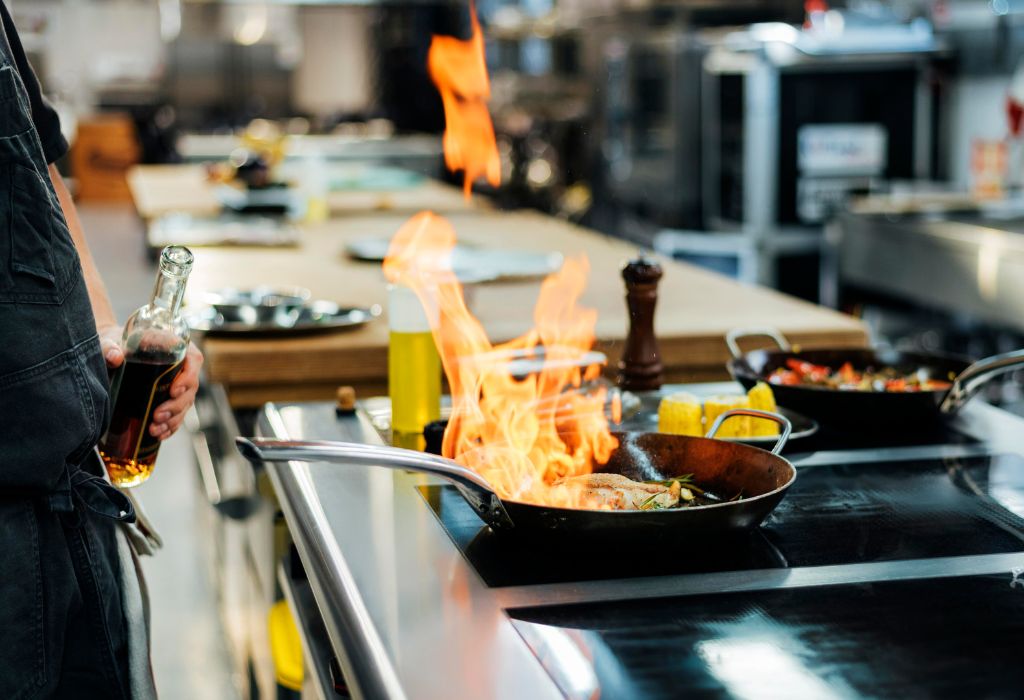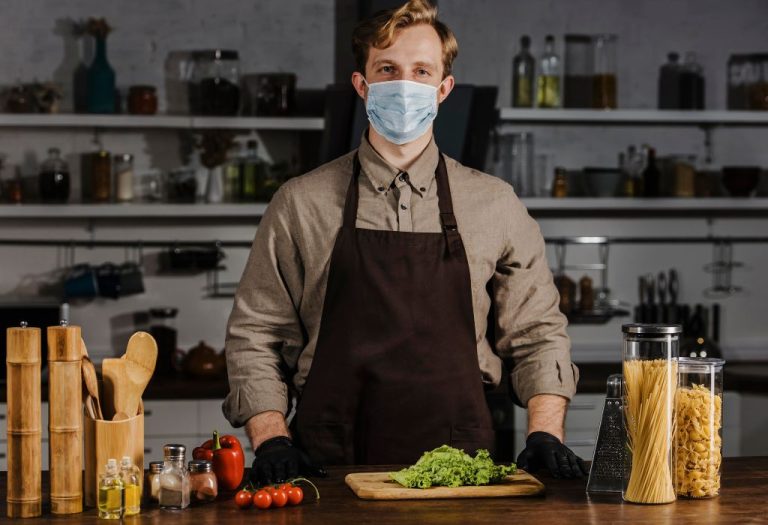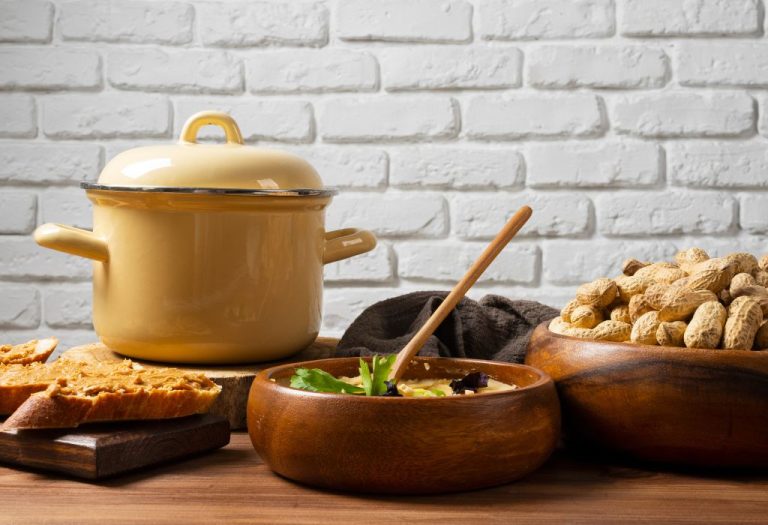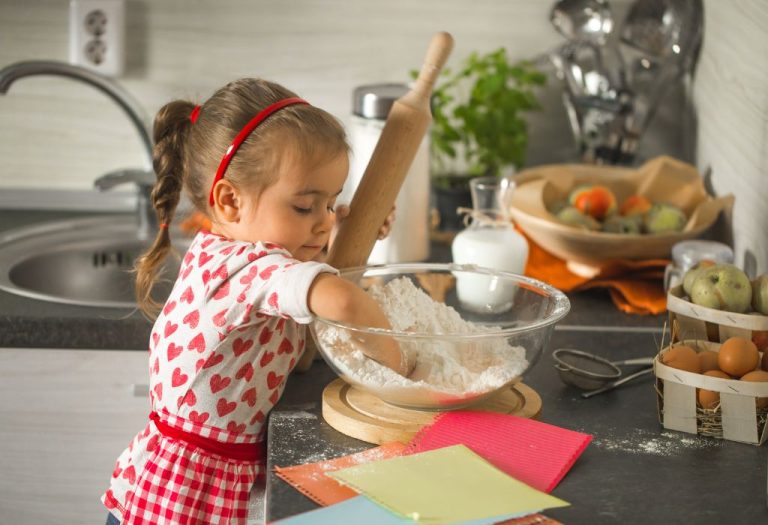The smell of sizzling bacon filled the air. In seconds, a tiny drop of hot oil leapt from the pan, striking an unprotected wrist. The sting was sharp, and the red mark lingered for days.
This small moment is a reminder of how fast burns happen. According to the National Fire Protection Association (NFPA), nearly 49% of all home fires start in the kitchen, and thousands suffer burn injuries every year. Many are preventable with the right habits and safety tools.
This guide will walk you through the main causes of kitchen burns, proven prevention strategies, essential safety gear, and first aid steps you should know. Whether you’re cooking at home or working in a busy restaurant, these tips can keep you safe.
Why Kitchen Burn Safety Matters

Every day, kitchens handle heat sources powerful enough to cook food in minutes — but they can also cause serious injury in seconds.
The American Burn Association reports that scalds from hot liquids account for over 30% of all burn injuries in the U.S. These burns often happen during normal cooking tasks like boiling pasta, frying chicken, or opening a pot of soup.
A burn doesn’t just hurt in the moment. Severe burns can lead to infection, nerve damage, and long recovery times. The goal is simple: cook with confidence while minimizing the risk.
For more data on burn injury statistics, visit NFPA’s kitchen safety reports.
Understanding Burn Hazards in the Kitchen
Burn risks are everywhere in the kitchen, from obvious flames to hidden heat sources.
Hot oil, boiling water, steam, and metal cookware hold temperatures high enough to injure skin instantly. Even the microwave, often considered safe, can release dangerous steam when containers are opened.
Electrical burns happen too. Faulty cords, damaged plugs, or using appliances with wet hands can create a shock hazard that burns tissue internally.
Chemical burns, though less common, occur when strong cleaning agents like oven cleaners or drain chemicals splash onto skin.
Types of Kitchen Burns
Thermal Burns
These occur when skin contacts a hot surface, flame, or boiling liquid. Touching a hot pan handle or spilling soup can cause this type of injury.
Scalds
Steam and hot liquids are the most common culprits. Children are especially at risk, as their skin is more sensitive to heat.
Electrical Burns
Caused by faulty appliances or handling plugs with wet hands. These burns may look mild on the surface but can damage deep tissue.
Chemical Burns
Happen when strong cleaning products contact the skin. These require immediate rinsing with cool water and medical attention.
Top Burn Safety Practices for Home Cooks
Handling Hot Pans and Pots Safely
Turn pot handles inward so they don’t hang over the edge. This prevents accidental bumps or spills. Use dry oven mitts — moisture can transfer heat quickly and burn your hands.
Preventing Oil and Grease Burns
Use lids or splatter screens to control oil splatter. Never pour water into hot oil, as it causes explosive steam and dangerous splashes.
Safe Use of Ovens and Stovetops
Open oven doors slowly to let heat escape gradually. Keep paper towels, dishcloths, and packaging materials away from burners.
Microwave Safety
Only use microwave-safe containers. When heating liquids, use a spoon or stir stick to prevent superheating and sudden eruptions.
Steam Safety
Tilt pot lids away from your face when opening. Steam can cause burns faster than boiling water.
Protective Gear for Burn Prevention
Good equipment is a simple but effective line of defense.
- Heat-Resistant Oven Mitts and Gloves – Protect hands from high heat.
- Silicone Trivets and Pot Holders – Prevent burns from placing hot pans on unstable surfaces.
- Aprons – Shield skin from oil splashes and spills.
Choose tools tested for high temperatures and keep them in easy reach while cooking.
First Aid for Kitchen Burns

For Minor Burns
Cool the burn under running water for 10–20 minutes. Apply a sterile, non-stick dressing. Avoid ice, as it can damage tissue.
For Serious Burns
Do not apply ointments or butter. Cover with a clean cloth and seek immediate medical care.
For Electrical or Chemical Burns
Turn off the power source before touching the victim. For chemical burns, rinse with water for at least 20 minutes and avoid scrubbing.
Burn Safety for Kids in the Kitchen
Children are curious, and kitchens are full of hazards.
Keep hot drinks and pans far from edges. Create a “no-play zone” around the stove and oven. If children help with cooking, assign safe tasks like washing vegetables or stirring cool mixtures.
Workplace Burn Safety (Commercial Kitchens)
Restaurants and catering kitchens operate under intense speed and heat.
Follow OSHA guidelines for protective clothing, footwear, and emergency training. Conduct regular safety drills and keep burn kits accessible in multiple locations.
Common Mistakes That Cause Burns
- Wearing loose sleeves that can catch on pot handles.
- Overcrowding pans, leading to hot oil spills.
- Forgetting to turn off stovetops and ovens.
- Using damp cloths to handle hot cookware.
FAQs – Burn Safety in the Kitchen
What is the most common cause of kitchen burns?
Hot liquids and steam are the leading causes, followed closely by contact with hot cookware.
Can steam cause more damage than flames?
Yes. Steam burns can penetrate deeper into the skin and cause more severe tissue damage.
Is aloe vera safe for burns?
For minor burns, pure aloe vera can soothe skin, but avoid scented or colored gels.
Why should wet oven mitts be avoided?
Water transfers heat quickly, increasing the risk of burns.
How do I know if a burn needs medical attention?
Seek help if the burn is large, deep, or blistered, or if it affects the face, hands, or joints.
What type of gloves are best for hot oil cooking?
Heat-resistant, oil-proof gloves provide the best protection.
Can you prevent burns completely in the kitchen?
While accidents can happen, following safety practices greatly reduces the risk.
Conclusion
Burn safety in the kitchen is about awareness, preparation, and quick action. By understanding the risks, using the right equipment, and practicing safe habits, you can protect yourself and your loved ones from painful injuries.
Small changes — like turning pot handles inward or lifting lids away from your face — can make a big difference. A safe kitchen is the foundation of great cooking.
I’m Emma J. Caldwell, the founder, lead writer, and home-cooking enthusiast behind KitchenGuideCo.com. With a background in culinary arts and over a decade of cooking experience in both professional and personal kitchens, I created this platform to demystify recipes, offer smart kitchen gadget reviews, and guide readers through meal prep with confidence and clarity.





